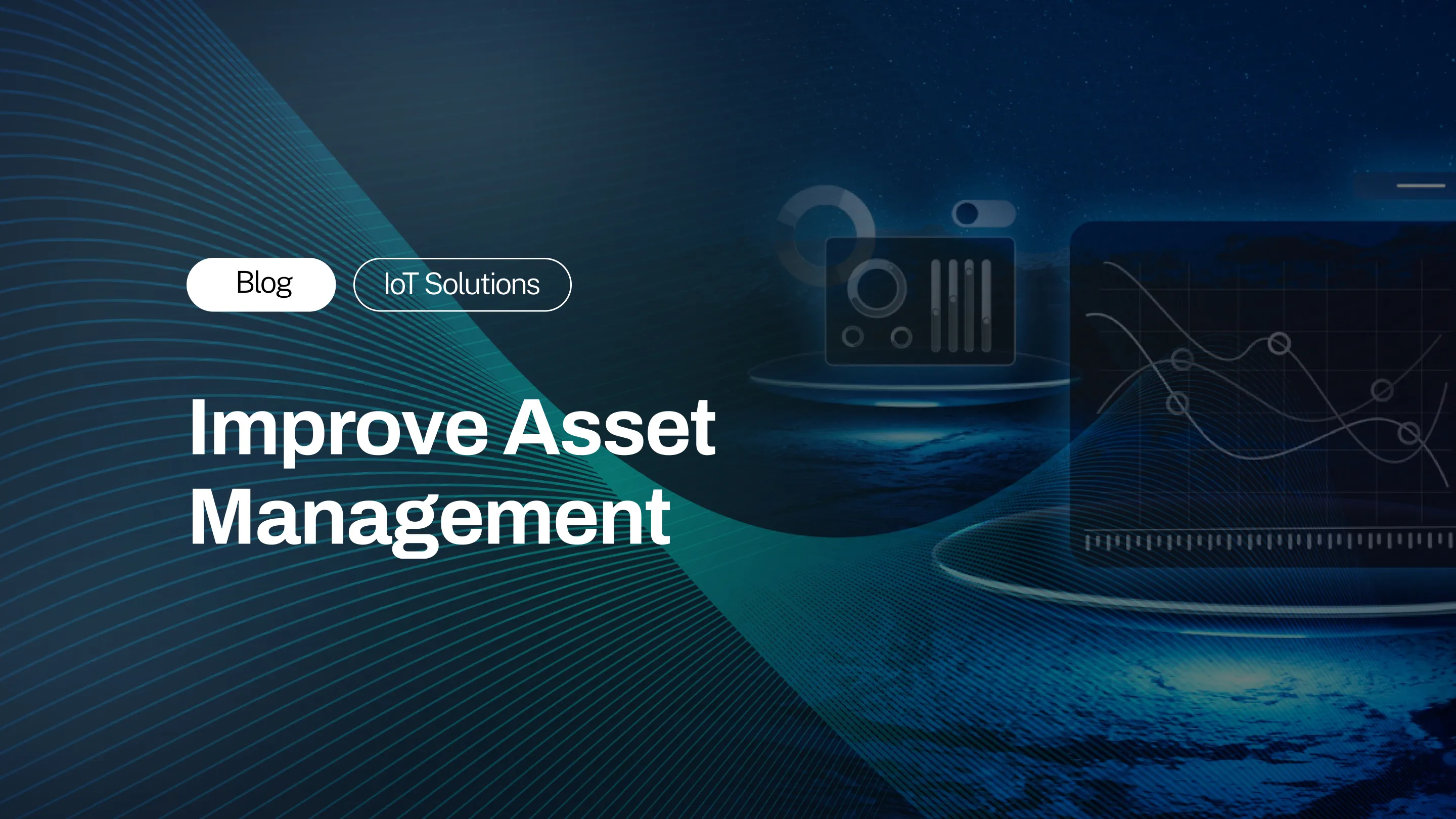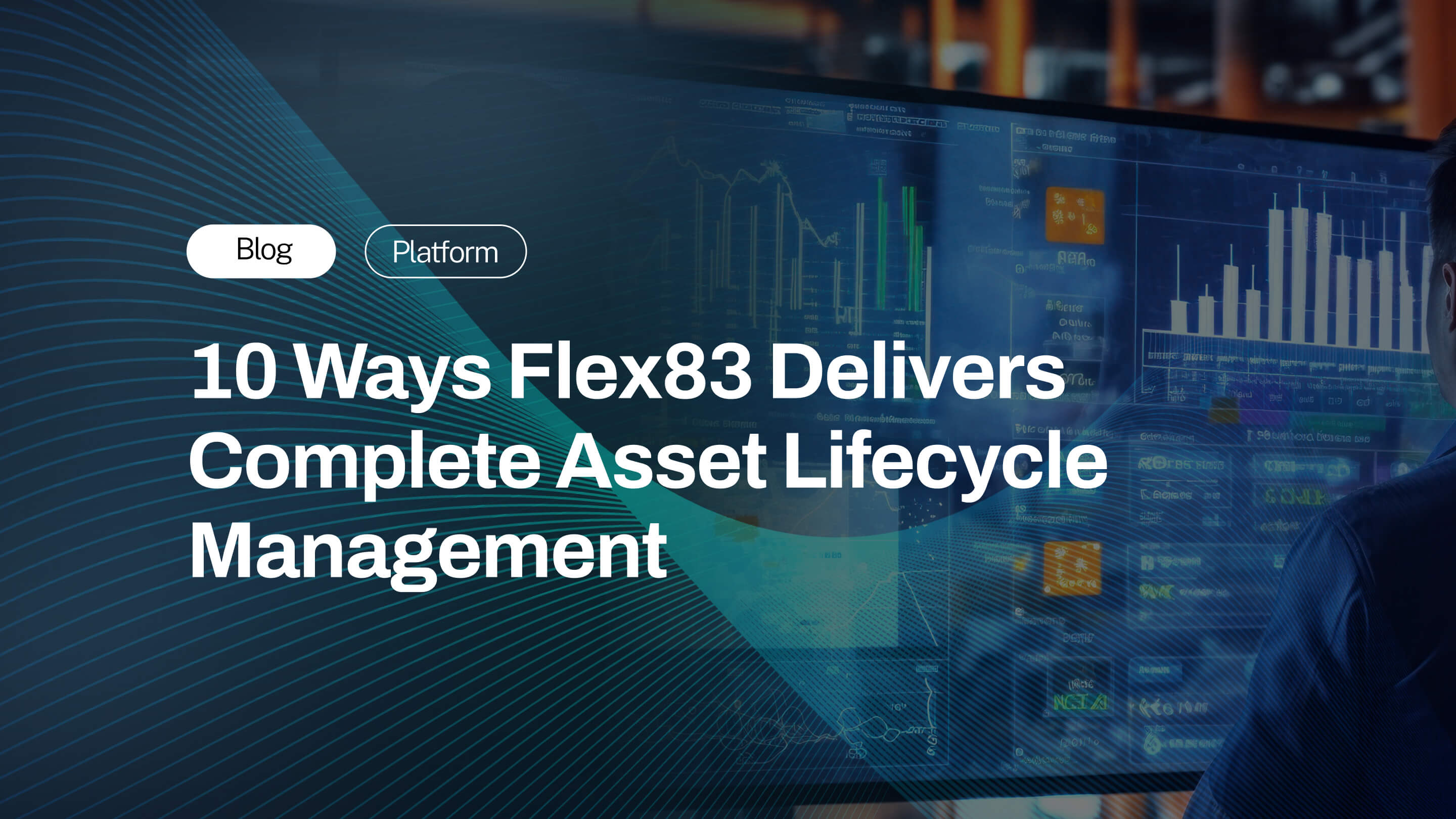In today's era, maintaining optimal performance and operational efficiency is more critical than ever for OEMs. IIoT Asset management—the process of overseeing and optimizing a company's assets—plays a central role in achieving these goals. As per Precedence Research, the global IoT-based asset tracking and asset remote monitoring market size was USD 4.12 billion in 2023, accounted for USD 4.47 billion in 2024, and is expected to reach around USD 9.23 billion by 2033, expanding at a CAGR of 8.4% from 2024 to 2033. As businesses increasingly adopt Industrial IoT-driven technologies, the integration of AI-powered asset performance management solutions has become a game-changer, offering unprecedented capabilities to track, analyze, and manage assets.
What is IIoT-enabled asset management?
Industrial IoT-based asset management refers to using the Internet of Things (IoT) to monitor, control, and manage physical assets (equipment). It involves integrating sensors, connectivity, and data analytics into assets to gather real-time information, track status, and optimize performance. This approach enhances visibility, efficiency, and decision-making across asset lifecycles.
Why do businesses need IoT-based asset management?
IoT-based asset management solutions empower businesses by providing them with complete control of their assets, thereby providing valuable data-driven insights. Traditional asset management methods often fall short of addressing the dynamic demands of modern operations, leading to inefficiencies and increased costs. IoT asset management introduces a new level of visibility and control, leveraging real-time data from interconnected devices to drive more informed decision-making. Businesses with traditional asset performance management solutions often lack tracking key metrics such as asset utilization rates, maintenance schedules, downtime occurrences, and operational performance, therefore failing to assess asset health, optimize maintenance strategies, and improve overall efficiency. Traditional methods of tracking these metrics can be cumbersome and prone to errors.
This is where an AI-powered asset management solution becomes necessary. By utilizing the power of AI and IoT, businesses can gain real-time insights into asset performance through advanced analytics and predictive maintenance capabilities. OEMS can leverage AI to examine vast amounts of data to identify patterns, forecast potential issues, and create actionable strategies. This proactive approach not only enhances asset lifespan but also significantly reduces operational disruptions, unexpected downtime, and maintenance costs.
Challenges in IoT Asset Management
With the increasing numbers of IoT assets and complexities involved in maintaining the end-to-end lifecycle of these assets, industrial equipment manufacturers are overburdened with multiple challenges. A minor defect in asset management or production can disrupt the supply chain. This is why they need to resolve these challenges:
- Data Security: Protecting sensitive information in a vast network of interconnected devices is paramount to avoid the risks of inadequate encryption and security measures.
- Scalability: The initial IoT platform, designed for a few thousand sensors, struggled to manage and analyze data from an expanded network of hundreds of thousands of devices, leading to performance issues and delays.
- Interoperability: Facing issues with integrating products seamlessly with other diverse devices and protocols smoothly for cohesive functionality, causing frustration among OEMs who expected cross-platform compatibility.
- Data Reliability and Integration: IoT sensors for predictive maintenance faced challenges when integrating sensor data with their existing Enterprise Resource Planning (ERP) system, resulting in inaccurate maintenance predictions, operational inefficiencies, and inconsistent data flow between devices and systems.
- Cost Management: Escalating costs as the initial budget for deploying thousands of connected devices and infrastructure did not account for deployment, scaling of IoT assets, ongoing maintenance, data storage, and integration expenses.
- Asset Management: Deploying connected devices faced with difficulties in efficiently tracking, configuring, and controlling a large array of devices remotely, leads to inconsistencies in device settings and performance issues across various locations.
- Compliance: Facing legal challenges after failing to comply with GDPR regulations and standards specific to IoT deployment and data handling, as their devices collected and stored personal data without proper consent and data protection measures.
- Asset visibility: OEMs struggle to maintain comprehensive visibility of their assets post-sale. Different customers may use different IoT platforms or have varying levels of connectivity and data-sharing preferences. This fragmentation can make it difficult for the OEM to track the performance and location of its assets consistently.
- Losing potential warranty savings: OEMs might lose potential savings if warranty claims are not processed efficiently. For example, if the equipment’s condition deteriorates gradually and the IoT data indicating issues is not reviewed in time, they might miss the opportunity to address these problems when the repair could be easy and cost effective. Additionally, inaccurate or incomplete records can lead to disputes or missed or fraudulent claims.
- Asset maintenance and scheduling: Coordinating maintenance schedules can be complex, especially when dealing with multiple distributors, resellers, or clients who have varying needs and operational conditions.
5 Key Trends in IoT-Based Asset Management
These key trends in IoT-based asset management highlight the ways technology is transforming how businesses track, manage, and optimize their assets. OEMs can get a more efficient, proactive, and data-driven approach to asset management, helping businesses optimize operations and reduce costs.
- AI-Powered Analytics and Predictive Maintenance: Artificial Intelligence (AI) and machine learning (ML) algorithms are increasingly being used to analyze data collected from connected devices. This enables predictive maintenance, where potential issues with assets can be identified before they lead to failure. By predicting failures and scheduling maintenance proactively, businesses can reduce downtime, extend the life of assets, and minimize repair costs.
- Cloud-Based Platforms for Scalability and Flexibility: Cloud-based platforms offer scalability and flexibility for managing IoT data and applications. They allow businesses to handle large volumes of data without investing in extensive on-premises infrastructure. These platforms enable real-time access to data from anywhere, streamline the integration of new devices, and support the rapid scaling of asset management operations.
- Automated Remote Asset Workflow Tracking: Automation tools can track asset workflows and status remotely, often integrating with other systems for a seamless management experience. This includes monitoring asset location, usage, and condition in real-time. Automated tracking reduces manual oversight, increases accuracy, and provides better visibility into asset performance and utilization.
- Condition-Based Asset Monitoring: Condition-based asset monitoring involves using IoT sensors to continuously measure and analyze the condition of assets. Maintenance and operational decisions are based on real-time data of asset conditions rather than fixed schedules. This approach ensures maintenance activities are performed only when necessary, optimizing resource use and preventing unnecessary maintenance work.
- Asset Lifecycle Management: IoT technology supports comprehensive asset lifecycle management by tracking an asset from acquisition through its entire lifecycle, including usage, maintenance, and eventual disposal or replacement. Effective lifecycle management helps businesses maximize asset value, improve planning for replacements and upgrades, and ensure compliance with regulations.
Benefits of Choosing the Right IoT Asset Management Solution
Choosing the right IoT Asset Management Solution is the path to maximize the full potential of industrial assets. It helps to:
1. Optimize Overall Equipment Effectiveness (OEE): Maintaining the overall equipment effectiveness is a priority for OEMs to ensure prior availability and cut downtime of manufacturing assets. With an AI-enabled solution, operators can schedule maintenance, collect real-time asset data, develop data patterns, and predict possible failures, ensuring overall equipment effectiveness. This further helps in reducing maintenance costs and increasing asset availability.
2. Better Compliance and Enhanced Safety: With the right IoT asset management system, you can get 100% assurance of adherence to regulatory standards and improved safety through continuous asset monitoring and real-time alerts.
For example, a food and beverage manufacturer deployed an IoT system that monitors storage conditions for perishables. The system ensured compliance with health regulations by providing real-time alerts for temperature deviations, reducing the risk of spoilage, and enhancing consumer safety. Read the entire case study here.
3. Improve Asset Efficiency and Longevity: The seamless IoT asset management system will boost operational efficiency and extend the asset lifespan through effective management and timely maintenance.
Take a major HVAC equipment OEM as an example, which uses IoT devices to monitor the performance of its units. The real-time data allowed them to predict when components would need maintenance or replacement, leading to fewer breakdowns and extending the equipment’s operational lifespan.
4. Track and Monitor Real-Time Asset: OEMs can get precise, up-to-date information on asset location and status, improving visibility and control with the seamless IoT asset management system.
Take a logistics company as an example that implemented an IoT-based asset tracking system for its fleet of delivery trucks. The system provided precise real-time location data, enabling better route planning, reducing delivery times, and improving overall operational accuracy.
5. Remotely Access, Manage, and Monitor Your Assets: Asset management will allow OEMs remotely to access and manage their assets via mobile applications, enhancing convenience and responsiveness.
For instance, an organization delivering or renting equipment with a usage-based subscription model can use a cloud-based asset management system to track the location, performance, and usage-patterns of these assets across various geo locations. This asset remote monitoring capability allows field technicians to quickly locate equipment, improving efficiency and reducing downtime, and truck roll costs.
6. Asset Health & Condition Monitoring: An IoT-based asset management system can manage data across various assets, that could further be created into a comprehensive and validated data repository. This allows regular monitoring of expected asset performance. These systems further resolve the arising complexities such as data latency and disparity, APM health, condition status, and promise a real-time view of asset health.
Take an example of a construction equipment OEM that deploys IoT devices in its machinery to monitor operational health and usage patterns continuously. This monitoring enables them to offer proactive maintenance services, reduce unplanned downtime, and enhance customer satisfaction.
7. Optimize Supply Chain Processes Efficiency: You can enhance supply chain management by getting real-time insights into inventory and asset flow with an Industrial IoT powered asset management system, improving overall operational efficiency. Using an AI-based asset management system, you can monitor shipment of your equipment and enhance the visibility of your equipment, which is a potential interferer in supply chain optimization.
Let's understand it with an example of a global electronics manufacturer adopting an IoT asset management system to optimize its supply chain. By tracking components and finished goods throughout the supply chain, they can improve inventory management, reduce lead times, and enhance overall supply chain efficiency.
Conclusion
The integration of Industrial IoT and AI technologies into asset management represents a transformative leap for businesses seeking to optimize performance and operational efficiency. The complexity of modern asset environments necessitates a shift from traditional management methods to more advanced, data-driven asset performance management solutions. Industrial IoT-driven asset management provides real-time visibility and control, addressing the limitations of outdated approaches and enabling businesses to make informed, proactive decisions. Adopting Industrial IoT and AI for asset management not only streamlines operations but also fosters a more agile and future-ready business environment.






.jpg)

%20(1).jpg)



.jpg)